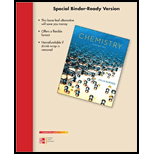
Concept explainers
Interpretation:
The product benzyne is to be formed by the reaction of chlorobenzene with
Concept introduction:
All those compounds that are capable of donating an electron pair to an electrophile to create a new bond are known asnucleophiles. It seeks a positive center. Lewis bases are considered nucleophiles.
When elimination of two substituents or a small molecule occurs in an organic molecule, either in one step or two step mechanism, it is called theelimination reaction.
Movement of an electron from one atom to another atom is represented by curved arrows.
Want to see the full answer?
Check out a sample textbook solution
Chapter 25 Solutions
Chemistry - With Access (Looseleaf) (Custom)
- Using condensed structural formulas, write the balanced equation for the reaction of 2-pentene with Br2 and name the resulting compound. Is this an addition ora substitution reaction?arrow_forwardDraw the skeletal structure of 3,4-dichloro-5-methylheptanearrow_forwardDraw the structures of all monobromo derivatives of pentane, C5H11Br, which contain a 4-carbon chain.arrow_forward
- Write the polymerization reaction in which acetylene (C2H2) produces polyacetylene. Show the structural formulae of the monomers and the polymer.arrow_forwardDetermine the mass of 2-bromopropane that could be prepared from 25.5 g of propene? assume a 100% yield of the product?arrow_forward(a) When a compound containing C, H, and O is completelycombusted in air, what reactant besides the hydrocarbonis involved in the reaction? (b) What products form in thisreaction? (c) What is the sum of the coefficients in the balancedchemical equation for the combustion of one mole ofacetone, C3H6O1l2, in air?arrow_forward
- Enter the molecular formula for butane, C4H10?arrow_forwardto which of the following pairs can hydrogen be added? Write the reaction. a) Methane and acetylene b) Hexane and cyclohexane c) cyclopropene and propine d) butadiene-1,3 and methyl-2-propanearrow_forwardDraw the formula of C6H9BrO2 with a cyclopentane ring.arrow_forward
 Chemistry: The Molecular ScienceChemistryISBN:9781285199047Author:John W. Moore, Conrad L. StanitskiPublisher:Cengage Learning
Chemistry: The Molecular ScienceChemistryISBN:9781285199047Author:John W. Moore, Conrad L. StanitskiPublisher:Cengage Learning Chemistry: Principles and ReactionsChemistryISBN:9781305079373Author:William L. Masterton, Cecile N. HurleyPublisher:Cengage Learning
Chemistry: Principles and ReactionsChemistryISBN:9781305079373Author:William L. Masterton, Cecile N. HurleyPublisher:Cengage Learning Chemistry & Chemical ReactivityChemistryISBN:9781133949640Author:John C. Kotz, Paul M. Treichel, John Townsend, David TreichelPublisher:Cengage Learning
Chemistry & Chemical ReactivityChemistryISBN:9781133949640Author:John C. Kotz, Paul M. Treichel, John Townsend, David TreichelPublisher:Cengage Learning


